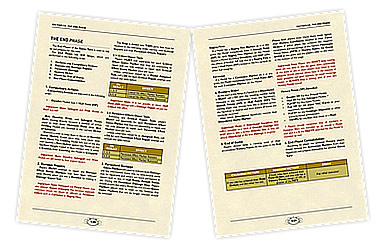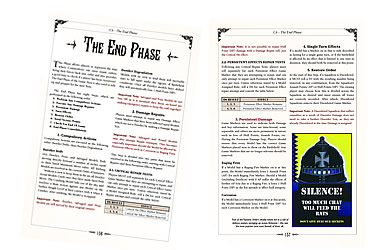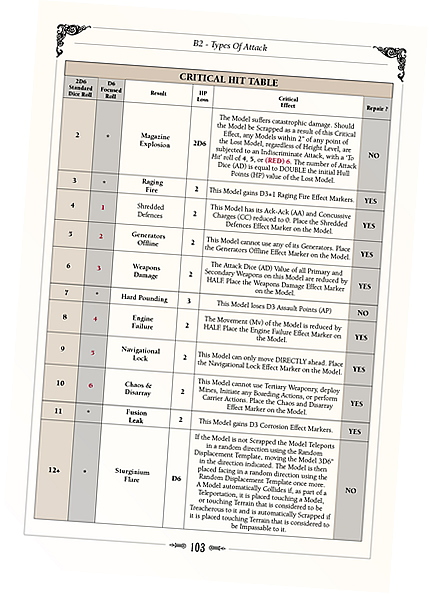
Dystopian Wars 2.5 Explained – Part 1
Hello everyone,
With the new Dystopian Wars 2.5 Core Rulebook about to ship out very shortly we thought it would be a good idea to provide an overview of what to expect in this new rulebook and to create a central location to discuss the changes made we have made. We will be looking at the contents of the new book over the next couple of blogs.
The first thing to emphasise is that this is very much version 2.5 and NOT version 3.0. This means that the core game engine remains the same. This means the basics of play, the look of a stats and so on are very much unchanged.
The biggest change to the rule book is not an alteration to any individual rule, but rather a complete re-drafting of the contents to make a book which is much more ‘user friendly’. The 2.0 book was quite a hefty tome and contained a lot of very dense text with a lot of Bold and Italics. While there was sound reasoning behind that approach it left the book as a rather intimidating item. The 2.5 book has been re-built from the ground up to be much easier to use. This is easier to explain visually, so let’s take a look at some sample pages from the 2.0 book and compare them to how they now look in the 2.5 book.
Combined with a more focused Index and Contents section the 2.5 book aims to be both easier to use for in game reference and more accessible for new players.
OK, now on to discussing some of the actual rules changes:
Damage One of the most fundamental changes in 2.5 is the new Critical Hit table and the introduction of the “Damaging Critical Hit”. Let’s take a look at the new table.
As you can see the big change here is that Hard Pounding now inflicts 3 Hull Points of damage. Given its position on the 2D6 as the most likely result it is not unreasonable to expect more damage being applied to ships when Critical Hits are rolled. Most other results remain at 2 Damage Points combined with their respective Critical Effects.
You will also notice the ‘Focused Critical Hit’ column. This column represents and standardises a host of effects, so for example Piercing munitions cause 1 Damage Point and roll on the Focused Critical Hit Column applying the Critical Effect generated. Other examples of instances when you will use this table include Boarding Assaults and Tesla Generators.
Another new feature of the 2.5 Rules is the Damaging Critical Hit. Sometimes the climb from a Critical Hit to the Double Critical hit is a very long one. So if you exceed the Critical Rating of your target and then the damage rating (but not twice the Critical Rating) you will inflict an extra point of Damage. So for example, when shooting at a DR 6 CR 10 model if I score 16-19 hits it will be a Damaging Critical Hit. So that’s one roll on the Critical Hit table and then an additional damage point on top. 20 or more is a double critical as before.
Boarding We have changed the Boarding process to resemble the V1 rules in as much as the attacking Squadron combines all their AP into a single Assault Group which is then subject to anti-boarding fire and subsequently fights in the Close Quarter Battle step.
This makes the Boarding process quicker and easier to understand.
Carriers The rules for Carriers have changed in two main ways. Firstly, the MAR you will see in your unit profiles now has two elements. The First is the Carrier value which, as before, is used for determining carrier actions (more on those in a moment). The second element details the Support Aircraft Squadron(s) that a carrier provides. So, for example, the Imperium Sky Fortress has: Carrier (6, 1X5 Wing). The Seydlitz Mobile Airfield has: Carrier (9, 2X4 Wing).
Carrier points are used for the Replenishing, Re-Arming and Re-Tasking Carrier Actions as before, but also for the new Re-Building Carrier Action. Re-Build allows a new Squadron to be created from wings in the scrapyard. This action is available to all Carriers (with sufficient points of course!). With re-building becoming a ‘standard’ ability there are some changes to Drones to make them distinct from ‘conventional’ SAWs. On paper Drones are less impressive than other SAWs as they have less MARs. However, fleets that make use of Drones will have numerous units with various Combat Co-ordinator effects that can significantly affect your Drones performance in a range of ways. Drones under the influence of one (or more!) Combat Co-ordinators will outperform other SAWs but it will require planning and careful positioning to reap these benefits.
The changes to the Carrier MAR fulfil two main functions. Primarily they add a lot more flexibility to the role of Carriers. So while you will see many that operate in a very similar manner as before some units will focus more on bringing SAS’s but not providing much support later in the game (such as the Ottoman Kanuni Dreadnought). Others may not provide SAS’s at all but can perform carrier actions on the Squadrons you do have (such as the Antarctican Orpheus Tank). This adds greater tactical depth to fleet building as you can tailor your SAS strategy to your various Carrier options. Secondarily the fixed squadron sizes limit aspects of ‘SAS Spam’ a common complaint about the 2.0 rules.
Generators The Generators section sees both a number of tweaks to existing generators and the addition of several new types that will start to appear in the future. The biggest change to note is that most Generators (in particular offensive ones) are now used AFTER movement.
In the next Blog, we will look at some changes to Munitions and Specialist Weapons, Scenarios and the new expanded rules for Commodores.
Until then, happy gaming and may your D6s continue to explode!
Spartan Josh Le Cheminant




